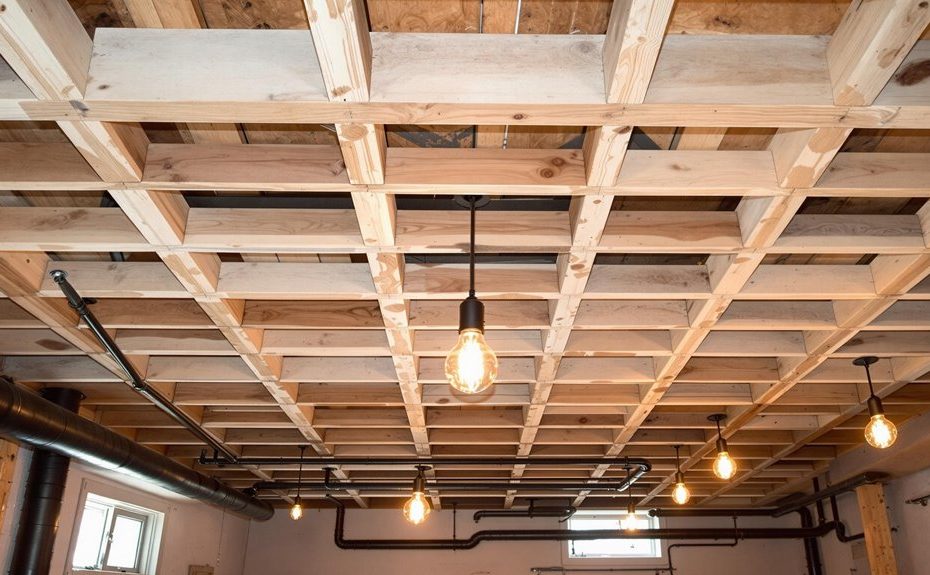Looking to upgrade your basement ceiling without breaking the bank? You’ve got plenty of creative options! Paint your exposed ceiling black for an industrial look, or try white-washed wood panels for a cozy coastal vibe. Corrugated metal panels offer durability on a budget, while fabric panels can soften the space beautifully. For a rustic touch, consider pallet wood – often available for free. Transform basic drop ceiling tiles with paint, hang canvas panels for artistic flair, or install a simple grid with curtains. Eco-friendly bamboo mats provide natural insulation too. These DIY solutions are just the beginning of your basement transformation journey.
Exposed Black Painted Ceiling
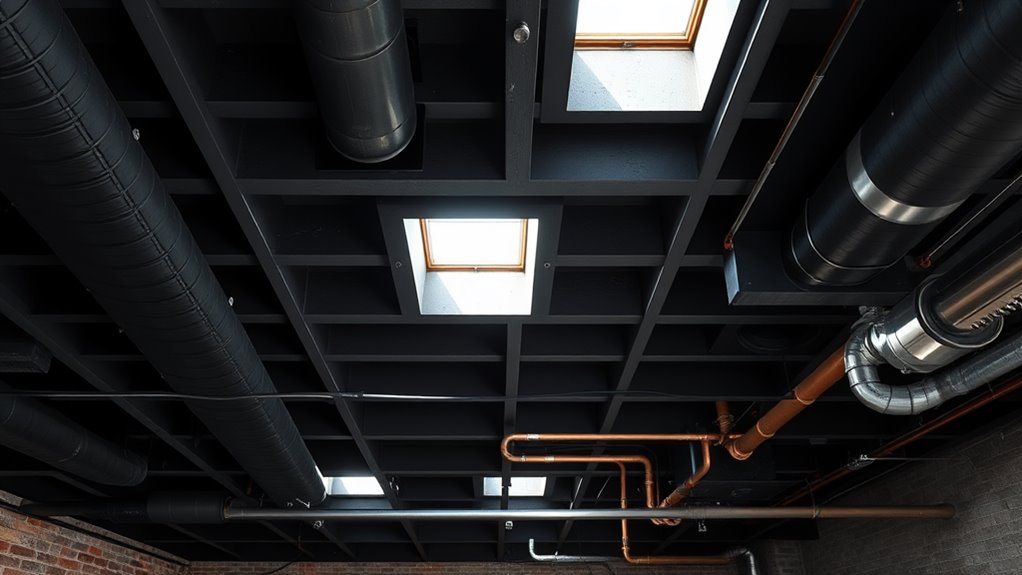
An exposed black painted ceiling offers a modern, industrial aesthetic while providing a cost-effective solution for finishing your basement. One of the key exposed ceiling benefits is easy access to pipes, wiring, and ductwork for future repairs. You’ll love how simple maintenance tips like dusting with an extended brush and spot-touching paint keep your ceiling looking fresh, making this an incredibly practical choice.
White-Washed Wood Panels
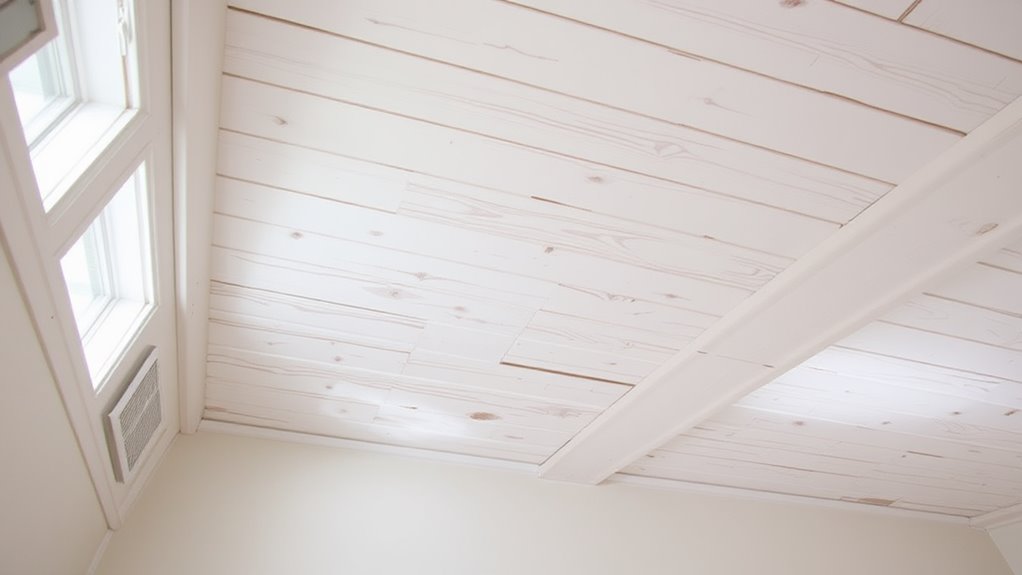
White-washed wood panels transform your basement ceiling into a bright, coastal-inspired focal point while maintaining structural accessibility. You can achieve this look by applying simple white washed techniques to pine or cedar panels, creating a relaxed, beachy vibe. The beauty of wood panel finishes is that you can customize the whitewash intensity – go subtle for warmth or heavier for a more modern feel.
Corrugated Metal Panels
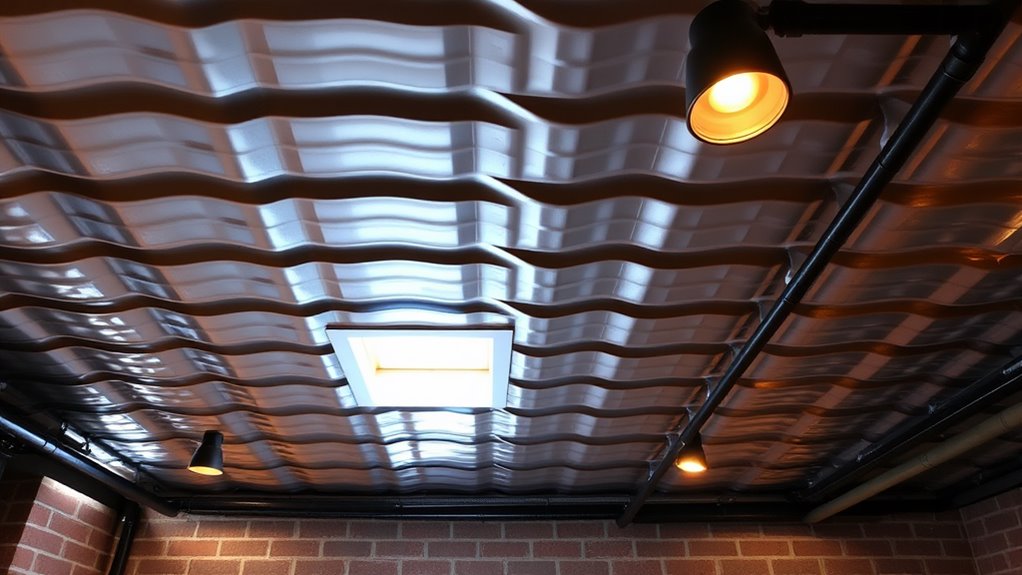
Corrugated metal panels offer an industrial-chic solution for basement ceiling coverage while providing excellent durability and sound dampening properties. You’ll love how these panels bring modern corrugated metal aesthetics to your space while being practical. They’re rust-resistant when properly sealed, easy to install, and can be painted to match your decor. Plus, they’re surprisingly affordable compared to traditional ceiling options.
Fabric Ceiling Panels
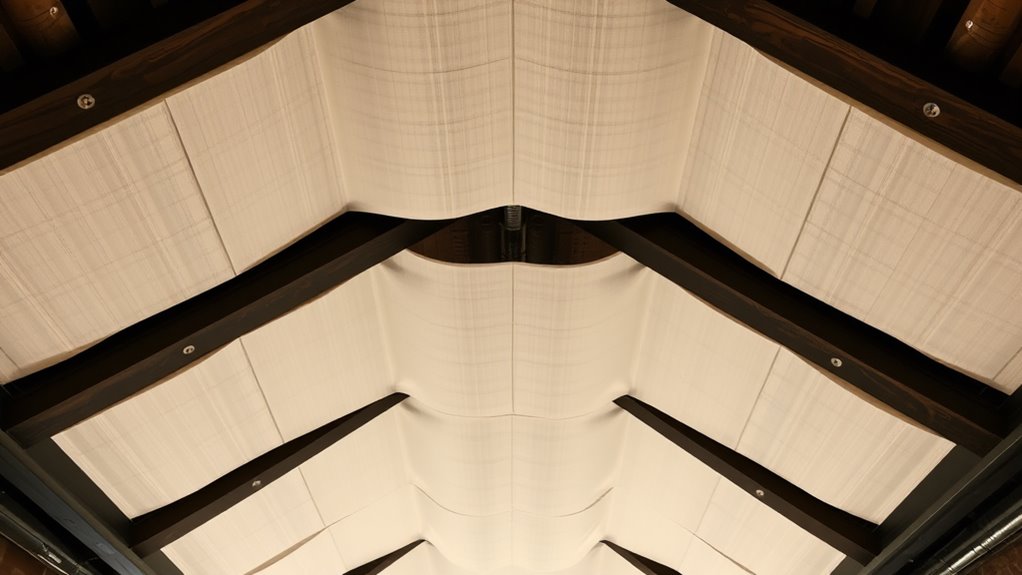
Transforming your basement ceiling with fabric panels creates a soft, elegant look while concealing unsightly pipes and wiring. You can choose from various fabric types, including lightweight cotton, polyester, or even sheer materials. For best installation tips, mount the fabric using tracking systems or staple it to wooden frames. Just be sure to select flame-retardant fabrics that meet local building codes.
Pallet Wood Ceiling
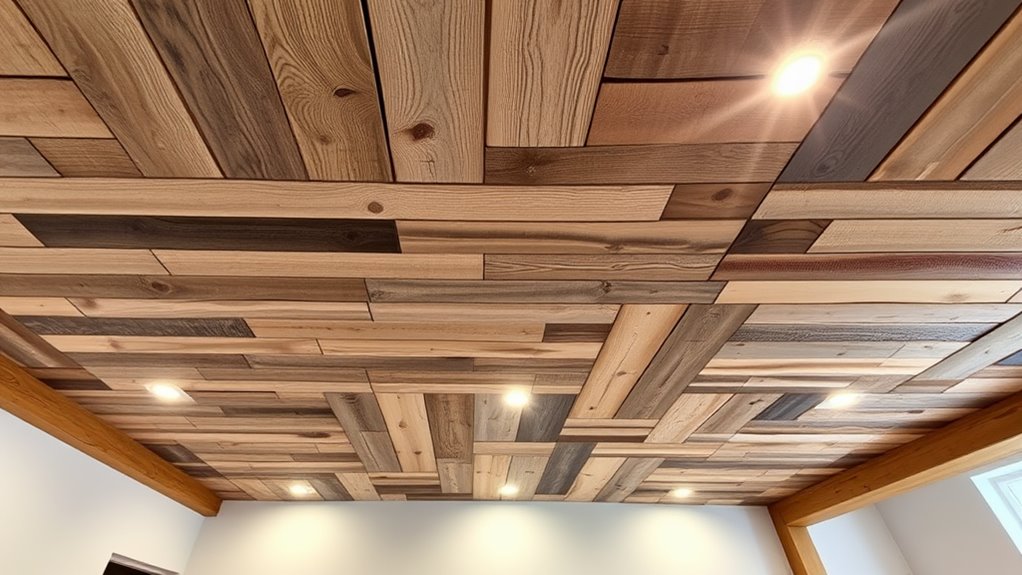
A pallet wood ceiling offers a rustic, industrial-chic upgrade that can dramatically enhance your basement’s aesthetic appeal. When it comes to pallet wood sourcing, you can often find free pallets from local businesses or online marketplaces. Before installation, focus on proper pallet wood finishing by sanding thoroughly and applying a protective sealant to prevent moisture damage and guarantee longevity.
Drop Cloth Ceiling Cover
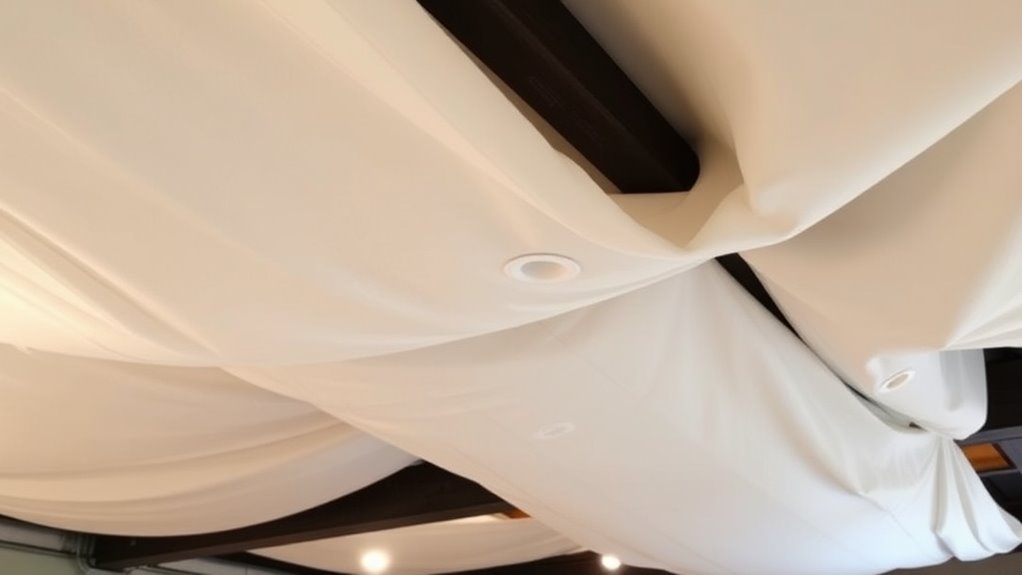
The versatile drop cloth ceiling cover stands out as an affordable and creative solution for concealing exposed basement ceilings. You can choose from various drop cloth types, including cotton and canvas, depending on your preference. Get creative with drop cloth patterns by using fabric dye, stencils, or even creating pleated designs. The result is a soft, fabric-like ceiling that adds warmth to your space.
Pressed Tin Tiles
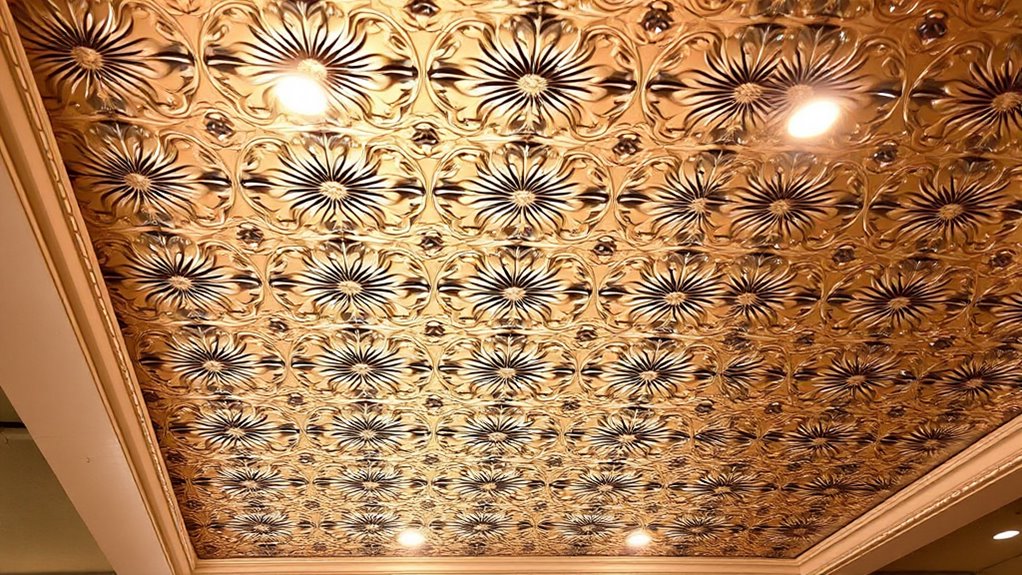
Moving from fabric to metallic finishes, pressed tin tiles offer vintage charm and architectural interest to basement ceilings. Among the pressed tin benefits, you’ll find durability, fire resistance, and easy cleaning. While pressed tin installation requires careful measurements and proper adhesive, you can tackle this project yourself with basic tools. Consider using lightweight faux tin panels for easier handling and installation.
Industrial Pipe Grid
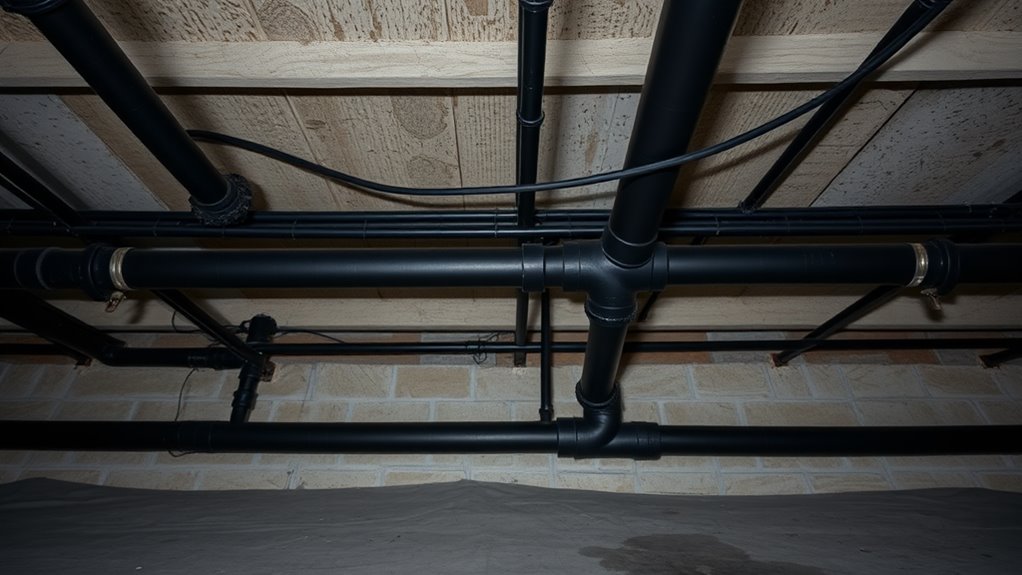
Industrial design’s raw aesthetic comes to life with exposed pipe grid systems, creating a distinctive ceiling treatment perfect for modern basement spaces. You can combine industrial pipe decor with practical functionality by incorporating pipe shelving ideas into your design. Mount black iron pipes in a grid pattern across your ceiling, then add hooks or brackets for hanging storage, lighting, or decorative elements.
Painted Plywood Panels
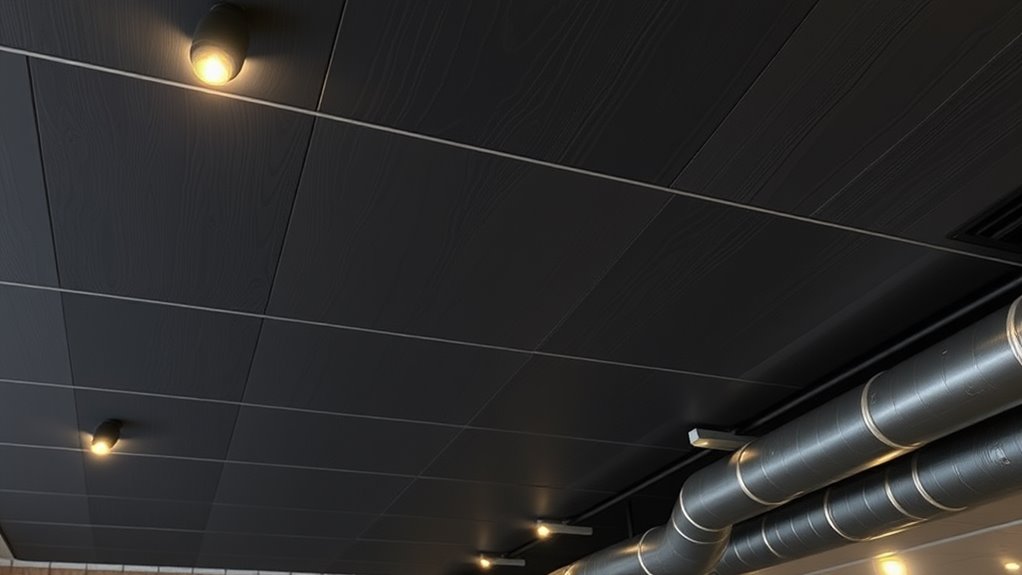
A creative and budget-friendly approach to basement ceiling design involves installing painted plywood panels. You can transform basic plywood finishes into stunning ceiling features by choosing bold colors or stains that match your decor. Panel installations are straightforward – simply cut the plywood to size, paint it your desired shade, and secure it to the joists with screws.
Rope Light Grid Pattern
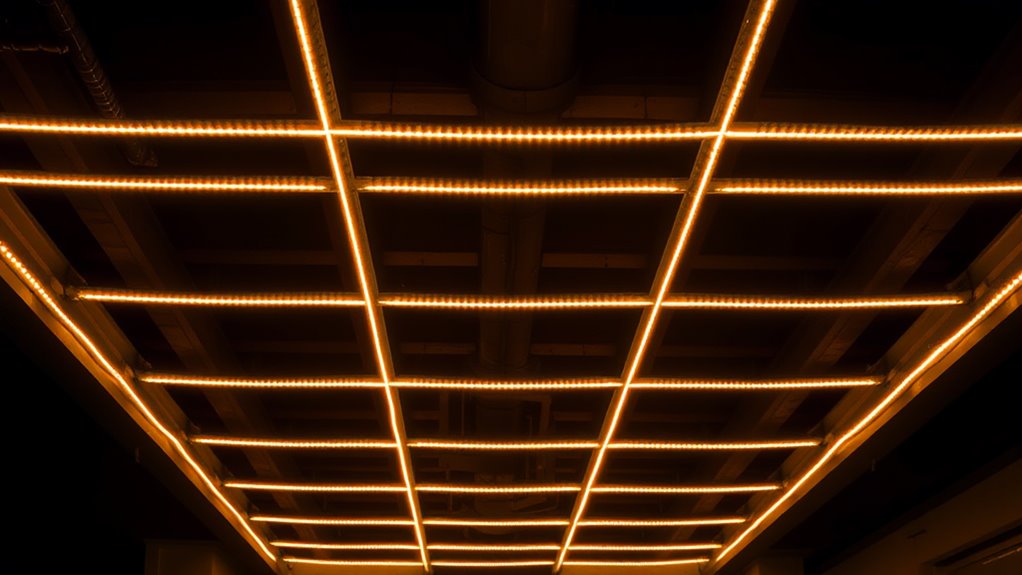
The eye-catching rope light grid pattern offers a modern, illuminated ceiling solution that combines aesthetics with functionality. By creating a symmetrical grid with strategic rope light placement, you’ll transform your basement ceiling into a stunning focal point. The ambient lighting effects cast a warm, inviting glow throughout the space, making it perfect for entertainment areas or home theaters.
Stained Wood Planks
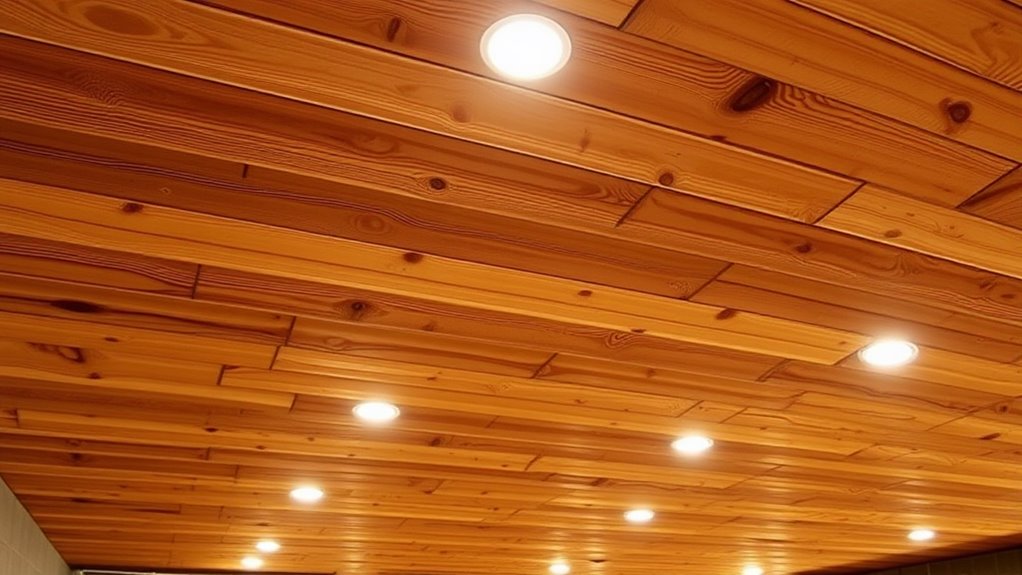
Natural warmth radiates from stained wood planks when used as a basement ceiling finish, offering timeless appeal and rustic charm to any underground space. You can experiment with various stained wood techniques, from light honey tones to deep mahogany shades. Different wood plank finishes let you customize the look while keeping costs reasonable, making this an attractive option for DIY enthusiasts.
Painted Drop Ceiling Tiles
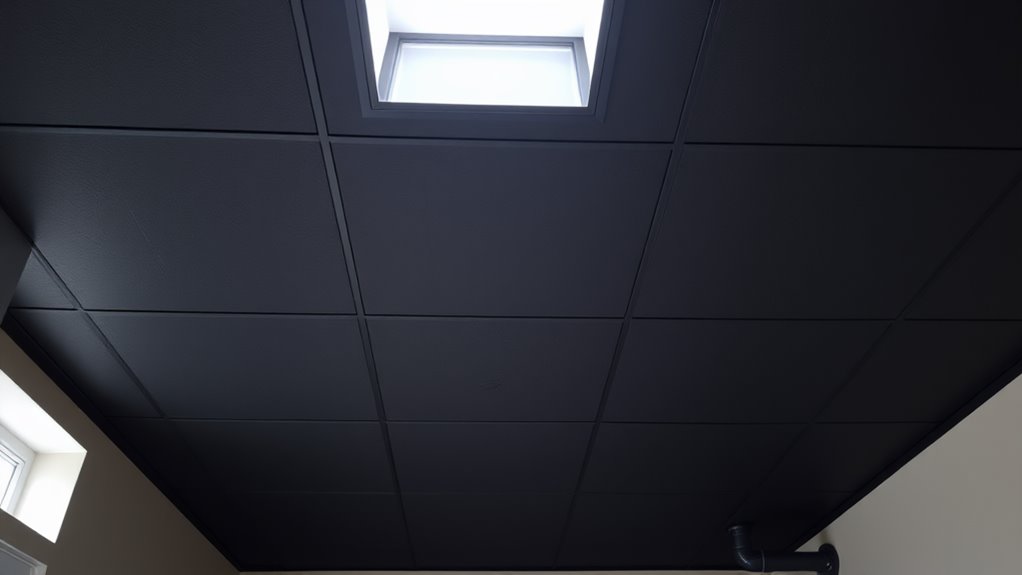
While stained wood offers natural beauty, painted drop ceiling tiles present an economical and versatile solution for basement renovations. You can transform basic white tiles with unique painted textures and exciting color schemes to match your space. Whether you choose bold geometric patterns or subtle faux finishes, this DIY approach lets you create a custom look without breaking the bank.
Canvas Ceiling Panels
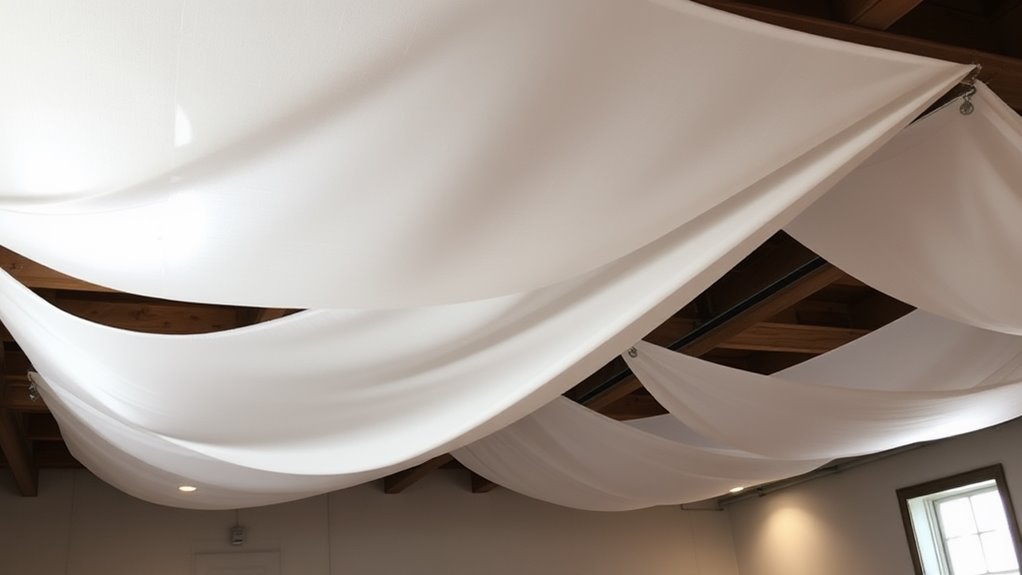
Creative homeowners seeking a unique ceiling solution often turn to canvas ceiling panels for their versatility and artistic potential. You can easily create custom design patterns by stretching canvas across lightweight frames and mounting them to your basement ceiling. The canvas texture adds warmth while hiding pipes and wiring, and you can paint or decorate the panels to match your style.
Ceiling Grid and Curtains
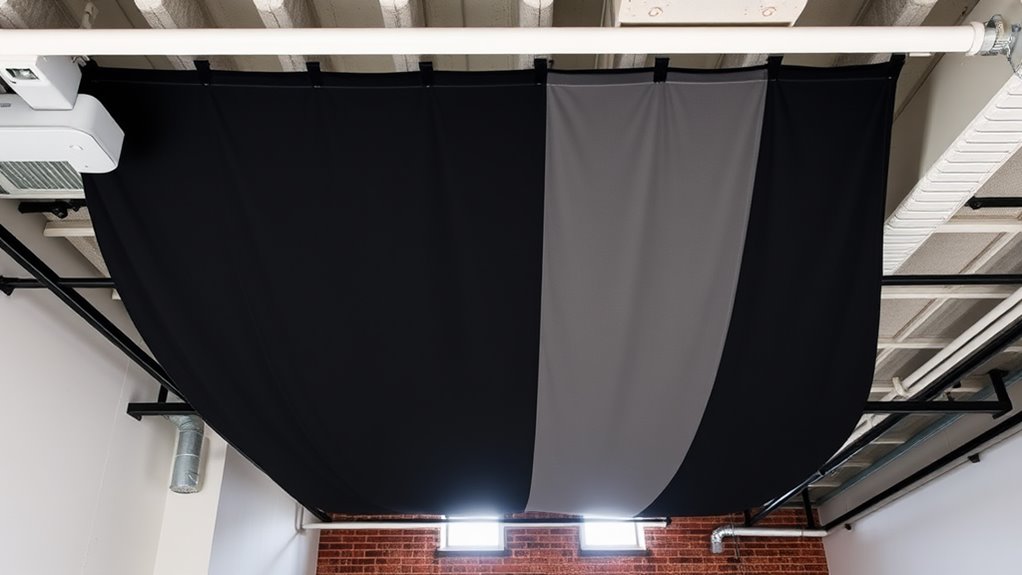
A practical solution for concealing pipes and ductwork involves installing a ceiling grid system paired with fabric curtain panels. You can create a unique ceiling design by hanging lightweight curtains from the grid in sections, allowing easy access when needed. Choose complementary curtain colors to match your basement’s décor, and consider using fade-resistant fabrics for long-lasting appeal.
Bamboo Mat Ceiling
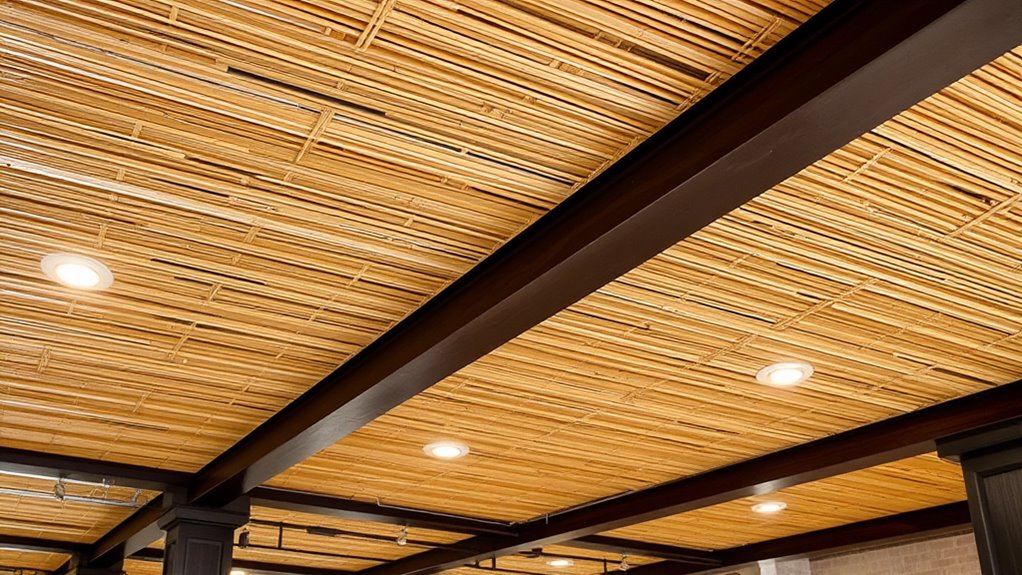
Installing bamboo mats offers an eco-friendly and visually striking approach to finishing your basement ceiling. You’ll love how these lightweight panels bring warmth and texture to your space while being surprisingly affordable. The bamboo ceiling benefits include natural insulation and moisture resistance. For best bamboo installation tips, start by creating a level mounting surface and secure the mats using furring strips.
Frequently Asked Questions
How Long Does a DIY Basement Ceiling Typically Last Before Needing Replacement?
DIY basement ceiling lifespan typically ranges from 10-20 years, depending on your maintenance routine and materials used. With proper care, like regular dusting, addressing moisture issues promptly, and checking for signs of wear, you can extend its life considerably. Pro tip: Keep an eye on your ceiling every few months – catching small issues early can save you from premature replacement and keep your ceiling looking fresh longer.
What Permits Are Required for DIY Basement Ceiling Installations?
When it comes to ceiling installations, you can’t just wing it and hope for the best! Most municipalities require permits for any structural modifications. You’ll need to check your local building codes and obtain the necessary permits before starting your project. Installation guidelines typically mandate electrical, fire safety, and height clearance requirements. Contact your local building department, as permit requirements vary by location and project scope.
Can DIY Basement Ceilings Help Reduce Energy Costs?
Yes, properly installed basement ceilings can markedly improve your home’s energy efficiency. When you add insulation during ceiling installation, you create a thermal barrier that keeps warm air from escaping upward in winter and cool air from leaking out in summer. These insulation benefits can lead to noticeable reductions in your heating and cooling costs, potentially saving you money on monthly energy bills.
How Much Weight Can Different DIY Basement Ceiling Options Support?
Different ceiling materials have varying weight capacities. Drywall can typically support 1.6 pounds per square foot, perfect for light fixtures and minimal storage. Drop ceilings handle about 1-2 pounds per square foot, while exposed joists can support 5-10 pounds per square foot. Material selection is essential – corrugated metal and plywood offer higher weight capacity, supporting up to 15-20 pounds per square foot when properly installed.
Will DIY Basement Ceiling Materials Affect Cell Phone Reception or Wifi Signals?
Worried about your phone calls dropping or slow internet? When it comes to signal interference, most common DIY ceiling materials won’t greatly impact your connectivity. Wood, drywall, and acoustic tiles typically allow signals to pass through easily. However, metal materials like tin tiles or steel panels can create some signal interference. If you’re concerned, try testing your signal strength before and after installation with different material types.
